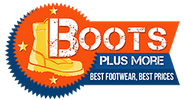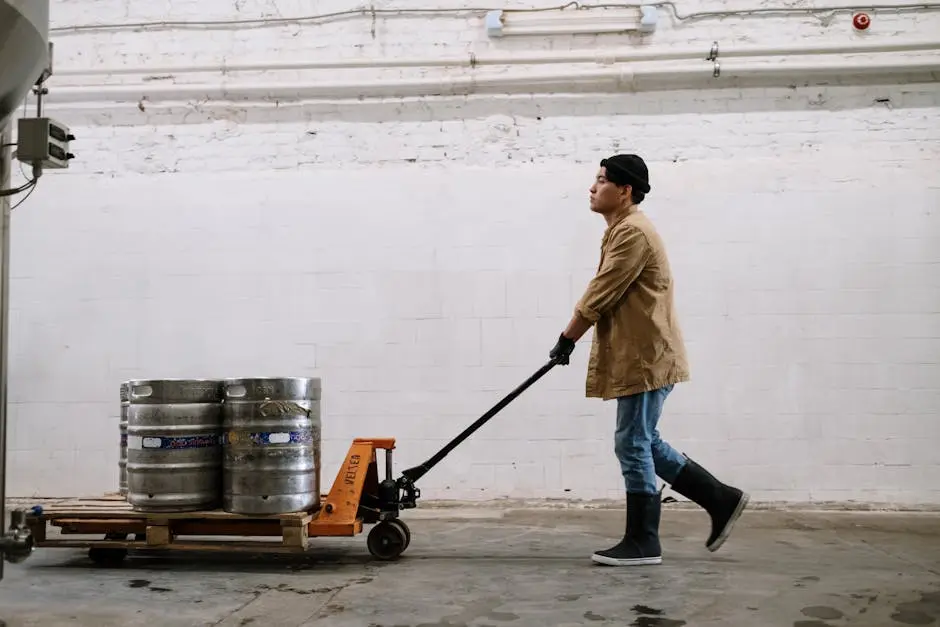How Should Work Boots for Men Fit?
Share
Finding the perfect pair of work boots can be a game-changer for comfort and safety at work. In this FAQ, we’ll explore how work boots for men should fit to ensure you make the right choice.
Check the Length and Toebox Space
Ensure there’s about a thumb’s width of space from your longest toe to the end of the boot. This prevents toe injuries and provides enough room for natural movement.
A correctly sized toe box can be crucial for individuals who spend a significant part of their day on their feet. This extra space prevents unwanted conditions like blisters or calluses that can form due to compression of the toes against the boot’s interior. Moreover, a proper toe box space ensures optimal circulation in your feet, contributing to improved comfort and focus at work. Imagine being able to wiggle your toes even after hours of wear; this flexibility should not be underestimated!
If you notice pinching or squeezing in the front part of your foot, it might mean that the boots are too short or too narrow, which can lead to discomfort or even long-term foot issues. It’s always better to err on the side of slightly more spacious rather than too cramped.
Assess the Width and Fit Around the Midfoot
The boot should snugly hug the midfoot without being too tight. This ensures stability and prevents blisters from excess movement.
A secure midfoot fit is essential for proper boot function. This area acts as the anchor point, holding your foot firmly in place during various movements. To test it, see if you can fit your finger between your foot and the boot at the widest point, allowing for some room but not too much. This balance is key to avoid excessive foot slippage or undue pressure on foot bones.
Remember, feet swell over the course of the day due to prolonged standing or walking. It’s advisable to try on boots towards the end of the day to ensure that they accommodate any natural expansion in foot size. This way, the fit during your actual working conditions will be more accurate.
Evaluate the Heel Fit
Your heel should stay in place without slipping. A well-fitted heel prevents blisters and provides adequate support.
When considering the heel fit, pay close attention to any lifting of the heel inside the boot. This movement is not only uncomfortable but also reduces the efficiency of your stride. A solid heel fit contributes to better posture and balance, both critical when working for long hours in physically demanding environments.
Test the Flexibility and Arch Support
Ensure the boot flexes at the ball of your foot and offers proper arch support to prevent foot fatigue.
Boots that are too rigid can be difficult to walk in and can cause unnecessary strain on your ankles and knees. Proper flexibility allows for a natural gait, reducing the effort needed to move and decreasing the risk of overuse injuries.
The arch support is another critical component. If your boots do not support your arch properly, it can lead to conditions like plantar fasciitis, characterized by pain in the bottom of the foot. Good arch support distributes your weight evenly, alleviating pressure from your heels and the balls of your feet during long periods of standing or walking.
Consider Your Socks and Insoles
Try the boots with the socks you usually wear. If needed, consider adding insoles for additional comfort and support.
Wearing thick socks with additional padding can improve comfort and adjust the fit slightly if your boots feel a bit loose. On the other hand, in hot climates or seasons, opt for moisture-wicking socks to keep your feet dry and prevent friction.
Insoles can also provide customized comfort but ensure they don’t make the boot too tight. Consider insoles that offer extra arch support or cushioning based on your specific needs to maximize comfort throughout your workday.
Walk Around to Test Comfort
Walk on different surfaces to ensure the boots remain comfortable and supportive in various conditions.
Walking tests will help identify any pressure points or areas of discomfort that only become apparent through prolonged wear. Make sure to walk both indoors and outdoors, ideally simulating your daily work environment. This can help cement your comfort and performance expectations before committing to purchase.
Final Thoughts on the Perfect Fit
Ensuring your work boots fit well is crucial for comfort, safety, and overall job performance. By following these guidelines, you can find the perfect fit that supports your feet throughout the workday.

